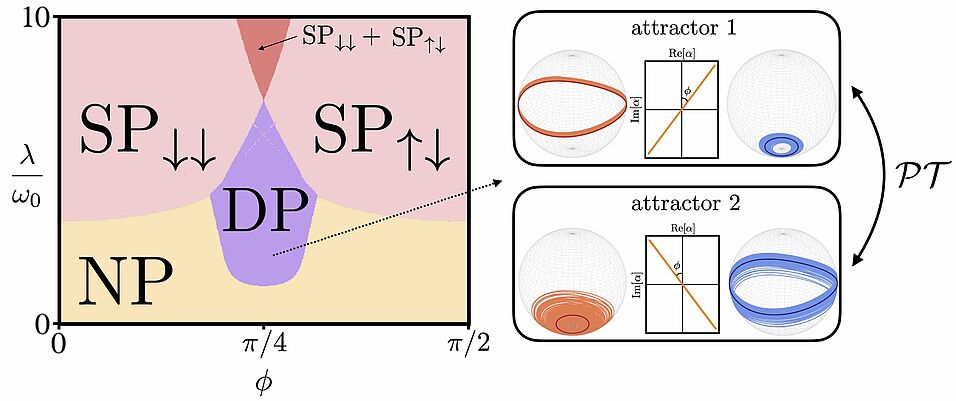Newton’s third law states that for every action there is an equal and opposed reaction. In systems away from thermal equilibrium, it is possible to violate this principle, giving rise to so-called non-reciprocal interactions. Recent research has shown that, in classical many-body systems, these non-reciprocal interactions can lead to a novel kind of phase transition, dubbed non-reciprocal phase transition. These feature non-stationary phases of matter accompanied by exceptional points in the dynamical spectrum.
Writing in Physical Review Letters, these authors introduce the Non-reciprocal Dicke model, a minimal model to study non-reciprocal phenomena in a many-body light-matter setting. This model exhibits a non-reciprocal phase transition beyond the paradigm presented in the literature. Novel characteristics arise because non-reciprocal interactions are mediated by a dynamical degree of freedom. The transition is accompanied by a PT symmetry breaking at the steady-state level and supersedes standard treatments limited to a linearized description of the system.
The present work constitutes one of the first characterizations of non-reciprocal phenomena in a many-body quantum optical setting, and can be readily tested in state-of-the-art atom-cavity experiments.
Publication in Physical Review Letters
Nonreciprocal Dicke Model
Ezequiel I. Rodríguez Chiacchio, Andreas Nunnenkamp, and Matteo Brunelli
Physical Review Letters 131, 113602 (2023).
https://doi.org/10.1103/PhysRevLett.131.113602

